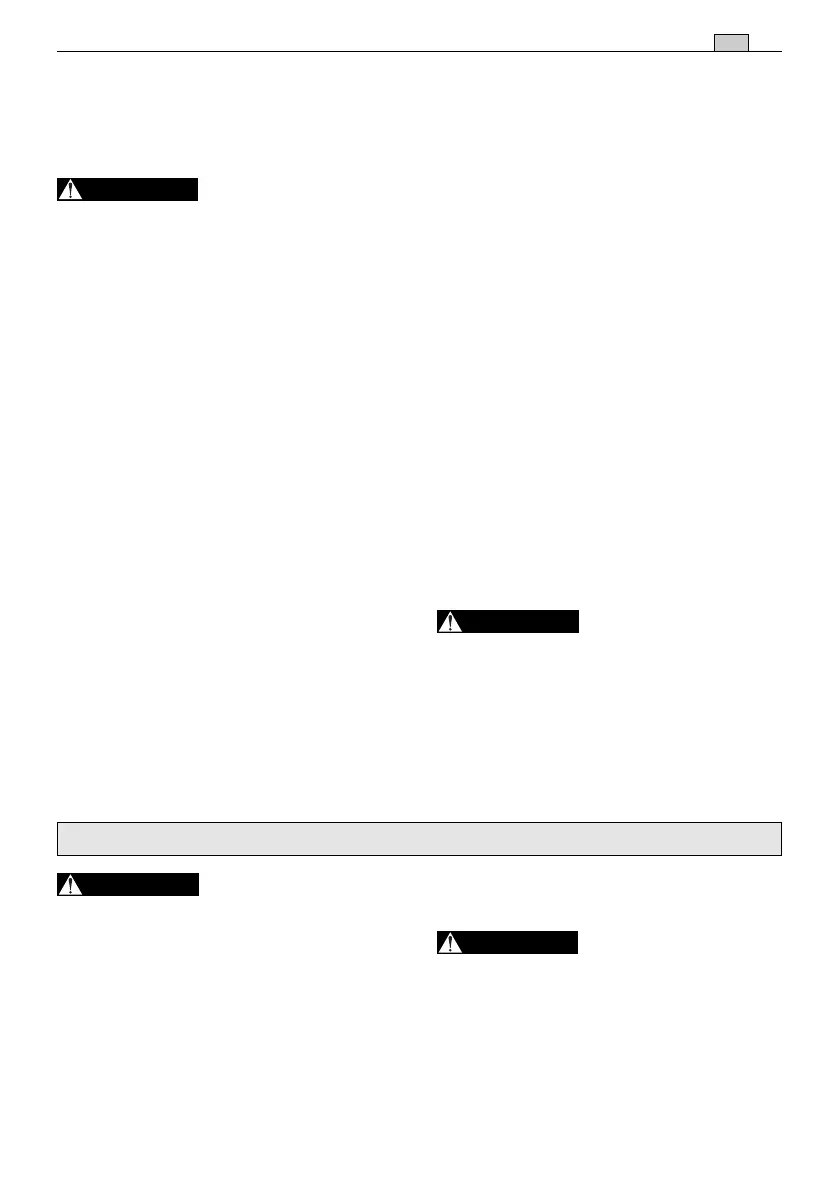 Loading...
Loading...
Do you have a question about the Stiga SP 52 and is the answer not in the manual?
Identifies the primary physical parts of the chainsaw, including the power unit and handles.
Details the location and function of various controls and points for filling fluids like fuel and oil.
Explains the information found on the machine's identification plate, such as conformity markings and serial numbers.
Explains the meaning of various symbols found on the chainsaw itself, related to operation and safety.
Emphasizes reading instructions, understanding controls, and proper use before operating the machine.
Outlines essential preparation steps, including wearing appropriate clothing and checking machine components before use.
Provides guidelines for safe operation, such as working in well-lit areas and maintaining a stable stance.
Details requirements for keeping the machine in good working condition and storing it safely.
Covers safe procedures for moving and transporting the chainsaw, including engine shutdown and securing the bar.
Highlights critical safety advice specific to chain saw operation, such as keeping body parts away from the chain.
Explains the causes of kickback and provides methods for operators to prevent it, ensuring safer cutting.
Advises users to follow safety regulations and employ suitable sawing techniques for efficient and safe operation.
Offers guidance for new users, stressing training and practice on basic operations before tackling complex tasks.
Explains the meaning of various highlighting conventions used within the manual to convey important information.
Guides the user through the process of attaching the spiked bumper to the chainsaw frame.
Provides step-by-step instructions for correctly mounting the guide bar and chain onto the chainsaw.
Details the correct mixture of petrol and oil required for the two-stroke engine and how to prepare it.
Outlines safety precautions and procedures for safely refuelling the chainsaw's fuel tank.
Advises on using the correct type of chain oil for lubrication and its importance for effective operation.
Lists essential checks to perform on the chainsaw's components before commencing work.
Explains how to adjust and check the chain tension to ensure it is correctly set for safe operation.
Describes how to test the functionality of the chain brake safety system.
Provides detailed instructions and safety warnings for starting the chainsaw's engine.
Explains the specific procedure for starting a cold engine, including priming and choke usage.
Describes the method for starting the engine when it is already warm, and troubleshooting steps if difficult.
Details how to use the throttle trigger and explains the function of the centrifugal clutch.
Outlines the correct procedure for safely stopping the chainsaw's engine.
Emphasizes the need for frequent checks of chain tension and oil delivery during operation.
Offers guidance on practicing cutting techniques and provides specific methods for delimbing and felling trees.
Details the steps to take after completing work, including engine shutdown, cleaning, and bar cover fitting.
Explains how to clean the cylinder and silencer area to prevent fire risks and ensure proper function.
Advises on maintaining the starting system, including cleaning air vents and replacing the starter rope.
Details how to keep the clutch unit clean and the importance of checking internal bearing greasing.
Describes how to check the chain brake's efficiency and the condition of its components.
Advises regular checks of the chain sprocket condition and replacement when wear exceeds limits.
Explains the need to periodically check and clean lubrication holes on the machine and bar.
Highlights the role of the chain catcher as a safety device that restrains the chain if it breaks.
Recommends periodic checks to ensure all nuts and screws are securely tightened for safe operation.
Explains the necessity of cleaning the air filter for engine efficiency and duration.
Details the importance of sharp cutting components for safe and efficient chainsaw operation.
Discusses the factory tuning of the carburetor for performance and emissions, and when to seek professional adjustment.
Provides instructions on maintaining the guide bar to prevent wear and ensure proper chain guidance.
Outlines how to clean and store the machine after use for optimal preservation.
Offers recommendations for preparing the machine for extended periods of non-use to prevent engine damage.
Lists compatible bar and chain combinations for different chainsaw models, indicating their suitability.